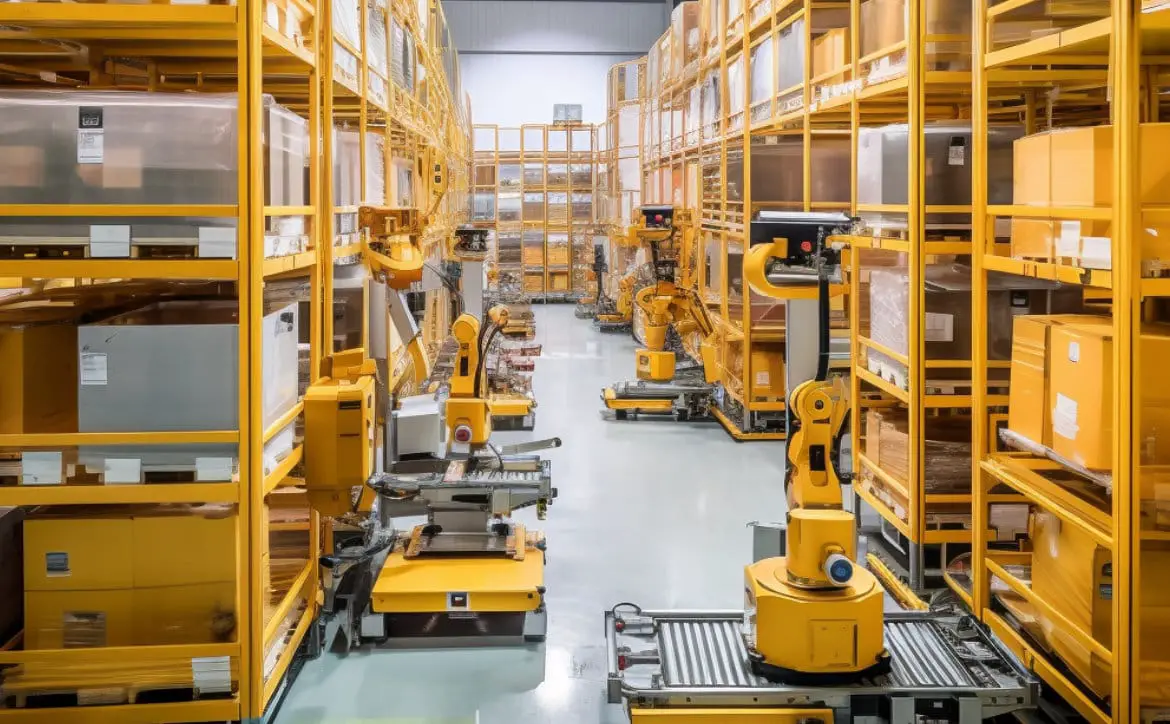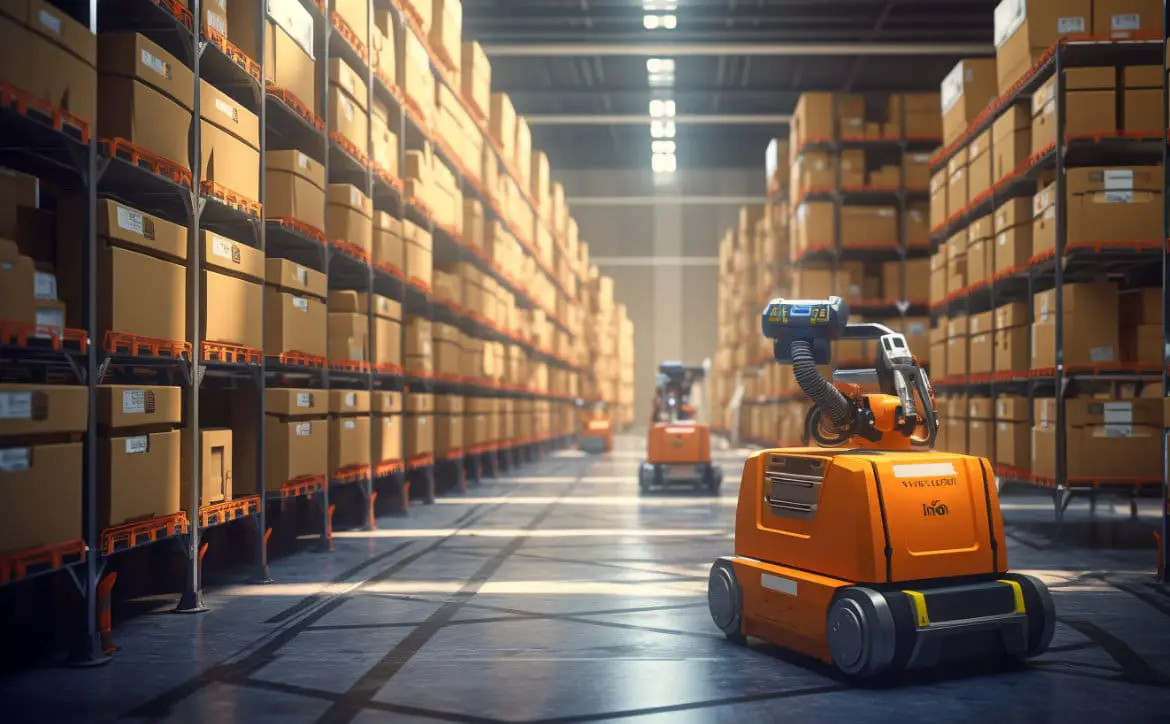Automation technology has experienced rapid advancements recently, transforming various industries and aspects of daily life. From self-driving vehicles to automated manufacturing processes, AI, and machine learning algorithms have enabled machines to perform tasks once thought solely within human capabilities.
Estimated reading time: 5 minutes
These technological breakthroughs increase efficiency, reduce costs, minimize errors and improve safety across numerous sectors. Here is some remarkable progress made in automation over the past few years and a glimpse into what lies ahead.
Automation Technology Advancement
LiDAR for Industrial Automation
Although this tech is central to autonomous driving, it has other uses outside the automotive industry. In 2021, ams OSRAM launched the SPL TL90AT03 — a LiDAR application useful for site leveling, industrial automation or visualizing construction site progress.
The technology provides a more in-depth understanding of the site before building, which reduces on-site waste by providing contractors enough information to build accurate prefabrication. This makes it easier to participate in sustainable construction practices.
LiDAR also makes documenting sites quicker and easier for architects and contractors. As-built drawings show all on-site modifications, so contractors can compare design specifications with the final product. This makes it easier to improve the onboarding of other contract workers during the project, streamline permit processes, ensure buildings are up to code and enhance renovation later on.
Continuous 3D Printing
The main priority for 3D printing tech has been developing technology to aid continuous printing and automate printing workflows. Companies want systems that can print and process products without interrupting the process.
For example, 3D Systems has further developed German startup DP Polar’s High-Speed Rotative AM to ensure the platform rotates continuously and produces objects nonstop. The interchangeable segments allow for constant production, and integrated technologies connected to ERP systems ensure the process runs smoothly. The printer works with minimal human interference, from acquiring and positioning material to slicing, part removal and processing.
The latest Cosmyx MIRA printer is a micro-factory built for industrial print manufacturing, controlled by a fully automated robot that operates a group of printers. It also monitors temperature levels for production and storage, and inspects products for quality before assembly and packaging.
Expect to see even more notable advancements in robotics and 3D printing as technology develops further. Bioinspired structures, AI-driven design optimization and multi-material printing are upcoming innovations that might significantly improve robotic systems’ capabilities in various sectors.
Robotics for Warehouse Automation

Robotics in the warehouse are making way for fewer errors, and more safety and precision in warehouse systems. Automated storage and retrieval systems automatically process orders from picking to delivery, while AMRs use advanced sensors and central mapping systems to track and scan inventory. AGVs move products between storage locations and departments through preprogrammed pathways with human assistance.
This year, the latest in warehouse automation robotics tech will be revealed at MODEX 2024. Companies like Tompkins Solutions are showcasing shelf-to-person picking solutions, and automated parcel sorting systems or OMNIA’s multi-directional sorting table that can sort, rotate, align and divert parcels with precision.
IoT for the Workplace
Sensors, temperature monitoring equipment and GPS units are making strides thanks to IoT. They present advanced tech to improve workplace processes like employee monitoring, transportation in supply chain management and equipment maintenance.
By providing wearable IoT devices to workers, management can track staff whereabouts, collect production data and implement additional safety precautions, such as notifying the employer in the event of a fall.
Considering transportation is one of the most important segments of the supply chain, the IoT implemented in GPS devices improves inventory control by guaranteeing drivers use the most efficient routes and offer real-time arrival projections.
Smart equipment transmits fault codes and planned maintenance reminders straight to trained workers for quicker repair services. IoT-integrated systems can also bolster workplace conditions by optimizing heating and cooling, providing smart building access to improve security, and tracking ingredients in fridges to remind people when food is about to expire.
Release of Level 4 Automation in the Public Transport Sector
The world is getting closer to driving automation that requires minimal to zero human supervision. Automation can also improve driver safety since the vehicles can intervene in emergencies like driver health issues or system failures.
In 2023, Chinese firm Baidu acquired a permit to release a driverless ride-hailing service in Beijing after rolling out robotaxi services in Wuhan and Chongqing. In Japan, Eiheji launched driverless vehicles with sensory equipment and cameras that collect data for accurate road navigation. According to Japan’s Road Traffic Act, the launch is under strict regulations, with limits on time, zones, and speed.
Waymo also operates a ride-hailing service in Los Angeles, San Francisco and Phoenix. These vehicles are also limited to certain zones within cities to protect other drivers and passengers.
While this signals a step into the increase in level 4 autonomous driving, there’s still a long way to go. Companies must overcome hurdles like public perception and consumer acceptance, regulatory or legal issues, and infrastructure adaptation to allow for mass production.
Looking to the Future
The advancement of automation technology recently has been nothing short of revolutionary. Integrating AI, machine learning and robotics has led to unprecedented productivity, accuracy, and safety improvements while significantly reducing operational expenses.
Their impact spans multiple industries and as they become increasingly sophisticated, they promise even more significant benefits for repetitive tasks, predictive maintenance and autonomous decision-making. As with any disruptive innovation, there are concerns about job displacement and ethical considerations surrounding autonomy and privacy. It remains crucial for policymakers, businesses, and society to balance leveraging these advances and addressing their challenges responsibly.
What do you think of automation technology? In what ways have you seen automation technology advance? You may comment by using the social media buttons below. Please share on your favorite social media site and tag us on Facebook, X, MeWe, and LinkedIn. Or join our Telegram channel here.
In some of our articles and especially in our reviews, you will find Amazon or other affiliate links. As Amazon Associates, we earn from qualifying purchases. Any other purchases you make through these links often result in a small amount being earned for the site and/or our writers. Techaeris often covers brand press releases. Doing this does not constitute an endorsement of any product or service by Techaeris. We provide the press release information for our audience to be informed and make their own decision on a purchase or not. Only our reviews are an endorsement or lack thereof. For more information, you can read our full disclaimer.










